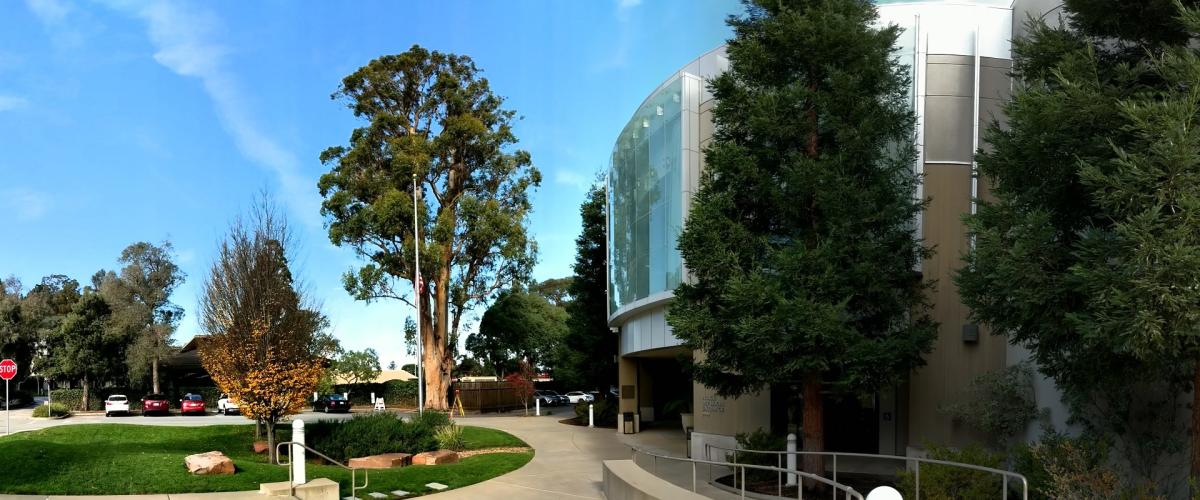
Located in Redwood City, at the heart of Silicon Valley, the San Mateo Superior Court offers the best of both worlds—a mission-driven organization that values innovation, integrity, and impact. You will play a key role in shaping how justice is delivered in one of California’s most forward-thinking and community-centered courts.
Lead a high-impact technology team at one of California’s most innovative trial courts.
San Mateo Superior Court is searching for an experienced and strategic Information Technology Manager to oversee the Business Applications unit responsible for designing, implementing, and sustaining the enterprise systems that keep Court operations running seamlessly. Reporting directly to the Court Director of Information Technology, you will guide a talented team, partner with internal and external stakeholders, and drive technology solutions that enhance judicial services, support data-driven decision-making, and advance the Court’s long-term priorities.
The Position:
Under the general direction of the Court Director of Information Technology, this position plans, organizes and supervises the work of the Court’s business application team responsible for design, development, implementation and support/maintenance of applications and technology solutions to support achievement of the Court's mission and business, operating and judicial objectives. The Court’s business application team performs limited in-house development. The team primarily implements, enhances, maintains and supports enterprise-wide, vendor developed systems.
The Information Technology Manager (IT Manager) provides supervision and direction for the ongoing maintenance, technical support, configuration, and customization of Court case management system applications and associated systems.
The IT Manager also coordinates and works closely with internal and external stakeholders to ensure sound, efficient technology solutions that meet the Court’s objectives. Performs other duties as assigned, demonstrating flexibility in responding to emerging needs and technology initiatives.
In addition, the IT Manager in the Business Applications section works closely with the Court IT Manager in the Infrastructure section to deploy solutions to support achievement of the Court's mission and business, operating and judicial objectives.
Distinguishing Characteristics:
Positions in this classification exercise a high level of judgment, influence, and subject-matter expertise to develop, implement, and administer plans, policies, and programs that advance the Court’s strategic priorities and organizational goals. Incumbents serve as key advisors and change leaders, ensuring initiatives are aligned with long-term objectives and operational excellence standards. Positions in this classification are responsible for exercising judgment, influence and expertise to formulate and administer plans, policies and programs in support of organizational goals and objectives.
Court Information Technology Managers provide strategic leadership and oversight of professional and technical staff responsible for the design, development, implementation, and ongoing support of a broad portfolio of applications, systems, and user/workstation services. They ensure technology solutions are reliable, secure, and aligned with Court operational, administrative, and judicial service needs, enabling efficient business processes and high-quality service delivery across the organization.
Incumbents provide strategic stewardship over assigned cost center budgets and ensure proactive planning, prioritization, and execution of technology initiatives of varying size, scope, and urgency. This includes aligning projects with organizational priorities, optimizing the use of financial and human resources, and ensuring outcomes are delivered on time, within budget, and in accordance with enterprise technology standards and long-range strategic goals.
Incumbents are expected to cultivate and sustain strong, customer-focused partnerships with court managers and executives, judicial officers, justice-system stakeholders, and Judicial Council of California staff. These relationships support effective collaboration, alignment of technology solutions with Court needs, and the advancement of shared operational and strategic priorities across the justice community.
Incumbents lead and participate in the assessment and adoption of emerging technologies, tools, standards, and frameworks to drive innovation and ensure the Court’s technology processes, systems, and solutions remain efficient, secure, and aligned with industry's best practices.
Examples Of Duties:
Duties may include, but are not limited to the following:
- Plans, organizes, controls, integrates and evaluates the work of assigned staff; implements and monitors work plans to achieve goals and objectives; develops, recommends and monitors project performance metrics; supervises and participates in developing, implementing and evaluating project plans, work processes and procedures to achieve established goals and objectives.
- Supervises and evaluates the performance of assigned staff; establishes performance requirements and personal development targets; regularly monitors performance and provides training, coaching and mentoring for performance improvement and development; takes disciplinary action to address performance deficiencies, in accordance with Court policies and labor contract agreements.
- Provides day-to-day leadership and project management oversight, and works with staff to ensure a high performance, customer service-oriented work environment that supports achieving the Court’s mission, objectives and service standards; applies best practices and quality assurance processes to assigned areas of responsibility.
- Develops and maintains strong customer relationships to ensure effective service delivery and customer satisfaction; interacts with users regularly to develop and refine requirements, gain agreement on solutions and deliverables, report on progress, monitor satisfaction, identify and resolve concerns and conflicts and seek cooperation, involvement and action to achieve mutual objectives; develops a broad understanding of user business, service delivery and operational requirements; advises and consults with managers on uses of technology to improve business and operational performance; informs managers on industry trends and technology developments.
- Supervises and may participate in developing and managing multiple application development or implementation projects and other technology solutions of varying size, scale, complexity and urgency; reviews and approves and may assist in developing project scope of work and boundaries, detailed project plans, milestones and deadlines and project budgets; oversees and may participate in performing business process and work flow analyses; oversees development of business and data models; oversees and may participate in testing and evaluating vendor packages, products and hardware; integrates new projects into overall work plans; coordinates and integrates work on multiple projects and project teams; conducts project team meetings; oversees and supervises staff to ensure project completion and accountability for results.
- Supervises and oversees development and implementation of comprehensive systems test plans; oversees or develops implementation plans and solution deployment strategies for approval; approves placing applications into production; monitors operations and performance; ensures timely and effective problem identification and resolution; supervises the development of systems and user documentation following quality assurance processes and standards; supervises and oversees user training.
- Supervises and may participate in the activities of staff responding to customer requests for services and resolution of problems associated with their use of computer hardware, standard and specialized software, peripheral equipment, devices, network connectivity and other technology tools; researches data and proposes response and resolution standards and guidelines.
- Handles difficult customer relations situations, involving upset and dissatisfied customers and requiring a high degree of sensitivity and use of sound independent judgment; takes action to resolve customer complaints or ensures that appropriate action is taken by court technology staff.
- Meets and works with project teams, user groups, technical committees and/or court executives and managers to review progress and resolve project issues, problems and bottlenecks; participates in joint working sessions with internal and external stakeholders.
- Prepares and assesses project cost estimates and justifications for new systems or system modifications; drafts Requests for Proposals, evaluates responses and recommends vendor selection; drafts language and assists in negotiating and administering vendor contracts; monitors project progress and reviews or prepares status reports; reviews and acts on project and/or contract change requests; approves deliverables.
- Oversees and participates in analyses, evaluations and risk assessments required for implementation and integration of new large scale and/or highly complex technology solutions.
- Supervises, participates in development and ensures the enforcement of Court-wide technology security policies, protocols and standards in areas of assigned responsibility; participates in or coordinates development of Court-wide disaster recovery and business continuity plans.
- Provides guidance to staff in troubleshooting applications, network and systems communications, software and hardware problems to ensure prompt resolution.
- May serve as project manager for designated projects.
Qualifications:
Education and Experience:
Any combination of education and experience that would likely provide the required knowledge, skills and abilities is qualifying. A typical way to qualify could include:
- Education: Graduation from a four-year college or equivalent technical certification with coursework in computer science, information systems or closely related field, AND a minimum of 60 semester or 90 quarter units in IT courses.
- Experience: A minimum of three years as an Information Technology manager or supervisor of at least three staff; a minimum of five years of progressively responsible experience in the planning, design, development, implementation, maintenance, and support of core business applications.
Required Knowledge and Abilities:
Knowledge of:
- Principles, practices and methods of information technology management applicable to business-related applications.
- Customer relationship management and internal consulting concepts and practices.
- Principles of project leadership and project management methods, tools and techniques, including preparation and management of detailed project schedules and metrics and change management and control.
- Court operations and processes and associated technology issues and requirements.
- Relational database theory, design rules and development practices.
- Operating system architectures, characteristics, components, uses and limitations applicable to the Court's technology environment.
- Disaster planning and recovery techniques.
- Internet/intranet technologies and design concepts.
- Principles, practices and court procedures applicable to budgeting, contracting and purchasing.
- Security management design principles, practices and related methodologies, tools and software.
- Concepts and techniques for process improvement; principles and practices of sound business communications.
- Principles and practices of effective supervision.
Ability to:
- Plan, organize, integrate and manage the work of the Court business applications team.
- Provide technical leadership in evaluating complex technology strategies and developing approaches that maximize return on investment.
- Develop, coach, and mentor staff, emphasizing professional development, and incident response readiness.
- Build teamwork and collaboration within the section and with other sections and divisions to share resources and optimize results.
- Define and communicate project goals to all project stakeholders clearly, succinctly and persuasively.
- Analyze user business and technology needs, formulate conceptual frameworks and apply state-of-the-art technology in developing/implementing integrated, efficient and cost-effective solutions.
- Oversee and effectively carry out project management responsibilities.
- Identify information management issues and opportunities, analyze problems and alternatives and develop sound conclusions and recommendations.
- Set priorities and balance the allocation of resources to most effectively meet a variety of user needs in a timely manner.
- Develop and implement appropriate procedures and controls.
- Prepare clear, concise and accurate process, procedure and systems documentation, reports of work performed and other written materials.
- Communicate clearly and effectively and convey understanding to technical and nontechnical audiences orally and in writing.
- Exercise sound independent judgment within general policy guidelines.
- Keep technical skills current to meet continuing technology assignments.
- Use tact and diplomacy when dealing with sensitive, complex and/or confidential issues and situations.
- Establish and maintain highly effective, customer-focused working relationships with court managers and end users, other technology staff, representatives of other agencies and others encountered in the course of work.
Other Requirements
- May be required to work flexible hours, including evenings or weekends, during emergencies or critical facility operations.
- May need to respond to emergencies or resolve issues after hours.
- Possession of a valid California driver’s license.
- Must pass a background check.
Physical Demands
- Ability to bend, stoop, reach, climb, and lift up to 50 pounds.
- Regular mobility to access and inspect facilities, construction sites, and mechanical spaces.
- Manual dexterity and visual acuity sufficient to operate tools, equipment, and computer systems.
- Must travel to all Court locations within San Mateo County.
- Must conduct all work from court premises, will not be able to telework.
Total Rewards and Benefits
The Superior Court of California, County of San Mateo, offers a comprehensive and competitive benefits package designed to attract and retain top talent. We are proud to provide exceptional benefits that promote work-life balance, wellness, and financial security:
- Compensatory time accrued at 5 hours per bi-weekly pay period, which may be used for additional time off or eligible for yearly cashed out.
- Fully paid medical, dental, and vision coverage for employees and their families.
- San Mateo County administers benefits for the Superior Court and offers a variety of plan options. Please visit the Benefits At-A-Glance page on the County’s website for a summary of available benefit packages.
- Wellness and professional development programs designed to support your personal and professional growth. Most opportunities are offered during work hours and at no cost to you.
- Participation in the federal Social Security system, providing valuable retirement benefits based on your salary and years of service.
- Pension plan with optional deferred compensation programs for additional retirement savings.
- Generous leave programs, including vacation, sick leave, and 14 paid holidays per year.
- Participation in Social Security and the pension system, with optional deferred compensation programs.
- Tuition reimbursement.
- Longevity pay.
Application/Examination:
Open & Promotional. Anyone may apply. Current County of San Mateo and County of San Mateo Superior Court of California employees with at least six months (1040 hours) of continuous service in a classified regular, probationary, extra-help/limited term positions prior to the final filing date will receive five points added to their final passing score on this examination.
Responses to the supplemental questions must be submitted in addition to our regular employment application form. A resume will not be accepted as a substitute for the required employment application and supplemental questionnaire.
The examination process will consist of an application screening (weight: pass/fail) based on the candidates' application and responses to the supplemental questions. Candidates who pass the application screening will be invited to a panel interview (weight: 100%) which may include a performance exam. Depending on the number of applicants, an application appraisal of education and experience may be used in place of other examinations or further evaluation of work experience may be conducted to group applicants by level of qualification. All applicants who meet the minimum qualifications are not guaranteed advancement through any subsequent phase of the examination. All examinations will be given in County of San Mateo, California and applicants must participate at their own expense.
IMPORTANT: Applications for this position will only be accepted online. If you are currently on the County's website, you may click the "Apply" button. If you are not on the County's website, please go to https://jobs.smcgov.org/ to apply. Responses to the supplemental questions must be submitted in addition to our regular employment application form. A resume will not be accepted as a substitute for the required employment application and supplemental questionnaire.
TENTATIVE RECRUITMENT SCHEDULE
Final Filing Date: January 5, 2026, at 11:59 PM
Application Screening: January 7-9, 2026
Combined Civil Service and Departmental Panel Interview: January 14 and/or 15, 2026
About San Mateo County
San Mateo County is centrally located between San Francisco, San Jose, and the East Bay. With over 750,000 residents, San Mateo is one of the largest and most diverse counties in California and serves a multitude of culturally, ethnically, and linguistically diverse communities.
The Superior Court of California, County of San Mateo, as an employer, is committed to advancing equity to ensure all employees are welcomed in a safe and inclusive environment. The Court seeks to hire, support, and retain employees who reflect our diverse community. We encourage applicants with diverse backgrounds and lived experiences to apply.
The Superior Court of California, County of San Mateo is an equal opportunity employer. We seek to hire, support, and retain employees who reflect our diverse community.
Note: The Human Resources Department of the County of San Mateo is conducting this recruitment on behalf of the Superior Court. This position is with the Superior Court of California in San Mateo County.













